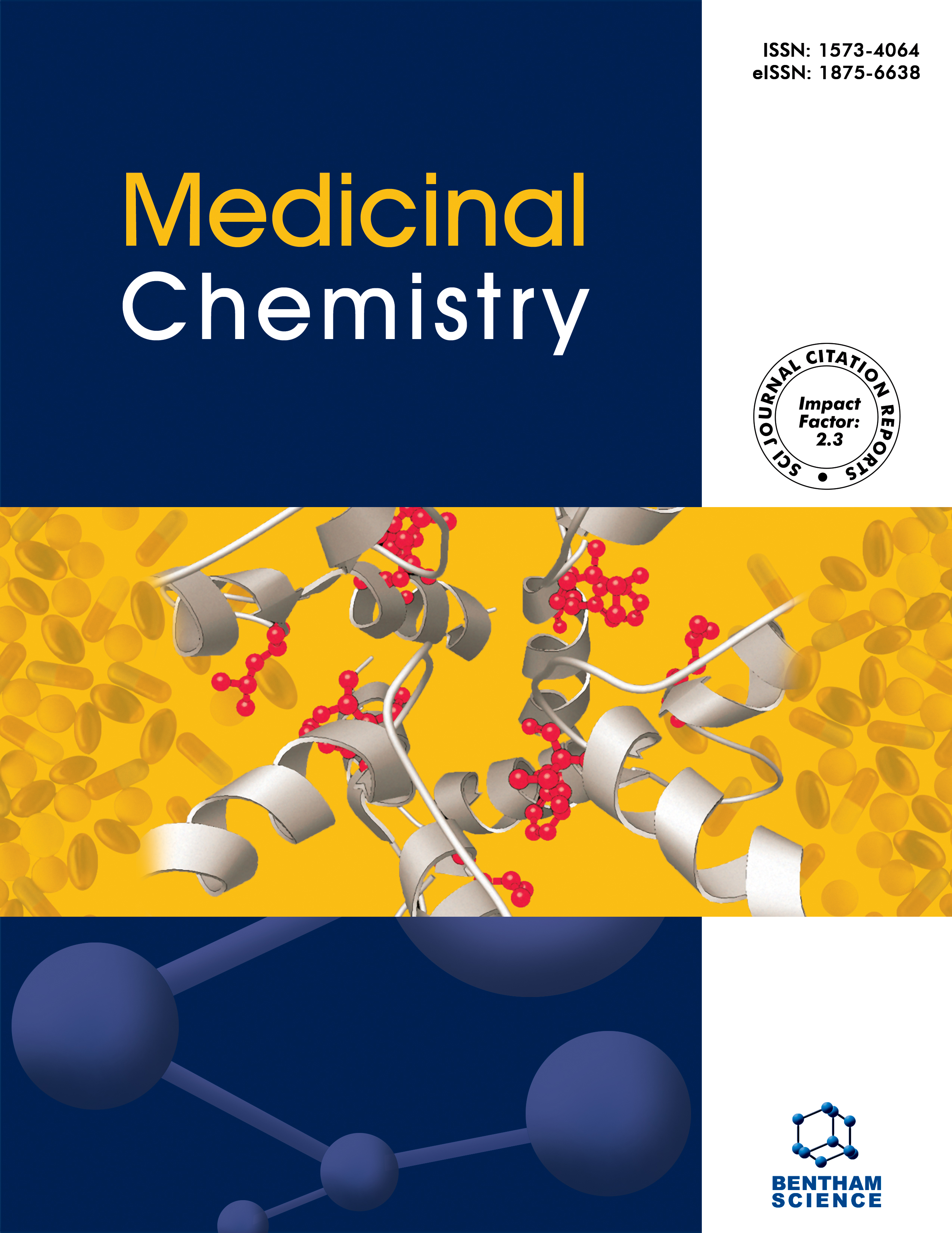- Home
- A-Z Publications
- Medicinal Chemistry
- Previous Issues
- Volume 11, Issue 3, 2015
Medicinal Chemistry - Volume 11, Issue 3, 2015
Volume 11, Issue 3, 2015
-
-
Impacts of Bioinformatics to Medicinal Chemistry
More LessFacing the explosive growth of biological sequence data, such as those of protein/peptide and DNA/RNA, generated in the post-genomic age, many bioinformatical and mathematical approaches as well as physicochemical concepts have been introduced to timely derive useful informations from these biological sequences, in order to stimulate the development of medical science and drug design. Meanwhile, because of the rapid Read More
-
-
-
Recent Development of Peptide Drugs and Advance on Theory and Methodology of Peptide Inhibitor Design
More LessAuthors: Qi-Shi Du, Neng-Zhong Xie and Ri-Bo HuangDue to the low toxicity, easy synthesis, rapid elimination, and less side effect, more and more peptide inhibitors are emerging as the effective drugs that are clinically used in therapies of a number of diseases. At the same time the computer-aided drug design (CADD) methods have remarkably developed. In this mini review the newly developed peptide inhibitors and drugs are introduced, including peptide vaccines for cancers, Read More
-
-
-
Overview of Binding Free Energy Calculation Techniques for Elucidation of Biological Processes and for Drug Discovery
More LessAuthors: Takeshi Ashida and Takeshi KikuchiThe elucidation of the interactions between a protein and a ligand or proteins is a key issue for understanding of functional processes of various proteins, enzymes and receptors in biological organisms, system biology and drug design. One of the most important matters in these problems is the accurate estimation of binding free energy between a protein and a ligand or proteins. In the present review, we overview various t Read More
-
-
-
Some Remarks on Prediction of Protein-Protein Interaction with Machine Learning
More LessAuthors: Shao-Wu Zhang and Ze-Gang WeiProtein-protein interactions (PPIs) play a key role in many cellular processes. Uncovering the PPIs and their function within the cell is a challenge of post-genomic biology and will improve our understanding of disease and help in the development of novel methods for disease diagnosis and forensics. The experimental methods currently used to identify PPIs are both time-consuming and expensive, and high throughput exper Read More
-
-
-
Advances in Protein Contact Map Prediction Based on Machine Learning
More LessAuthors: Jiang Xie, Wang Ding, Luonan Chen, Qiang Guo and Wu ZhangA protein contact map is a simplified, two-dimensional version of the three-dimensional protein structure. Protein contact map is proved to be crucial in forming the three-dimensional structure. Contact map prediction has now become an indispensable and promising intermediate step towards final three-dimensional structure prediction, while directed sequence-structure prediction hits its bottlenecks. In this article, diff Read More
-
-
-
New and Under Explored Epigenetic Modulators in Search of New Paradigms
More LessAuthors: Mohammad A. Alam, Yeruva Suman Reddy and Mohamad Akbar AliAberrant regulation of epigenetic pathways causes many diseases including aging, cancer, diabetes, viral pathogenesis, drug addiction etc. and it has been estimated that epigenetic aberrations are at least ten to forty times more frequent in cancers than genetic mutations. Present epigenetic modulators hold great promise for a variety of diseases, and important tools for biological applications but these molecules have many Read More
-
-
-
Modulation of γ2-MSH Hepatoprotection by Antisense Peptides and Melanocortin Subtype 3 and 4 Receptor Antagonists
More LessMelanocortins, i.e., melanocyte stimulating hormones (MSH) are peptides with strong antiinflammatory effects. The most investigated aspects of γ2-MSH are related to cardiovascular effects and natriuresis, with limited research available about its anti-inflammatory and cytoprotective effects. The aims of this study were: 1) to examine the effects of γ2-MSH and its derivative [D-Trp2]-γ2-MSH on the acetaminophen model of live Read More
-
-
-
5-Aryl-1,3,4-Thiadiazole-Based Hydroxamic Acids as Histone Deacetylase Inhibitors and Antitumor Agents: Synthesis, Bioevaluation and Docking Study
More LessThe search for newer histone deacetylase (HDAC) inhibitors has attracted a great deal of interest of medicinal chemists worldwide, especially after the first HDAC inhibitor (Zolinza®, widely known as SAHA or Suberoylanilide hydroxamic acid) was approved by the FDA for the treatment of Tcell lymphoma in 2006. As a continuity of our ongoing research in this area, we designed and synthesized a series of 5-aryl-1,3,4-thiadiazole Read More
-
-
-
Discovery of Novel Dinitrobenzotrifluoride Containing o-Hydroxybenzylamine Derivatives as Potential Antibacterial Agents
More LessAuthors: Qing-Shan Li, Hai-jun Ni, Yang Yang, Xian-Hai Lv and Ban-Feng RuanThe continual emergence of bacterial resistance problems to current clinical drugs has brought a severe threat against human being's health; and the development of novel antimicrobial agents for selectively inhibiting the constantly evolved bacterial targets has also been continually promoted, with challenging processes like marathon race. FabH, which initiated the fatty acid biosynthesis cycle, provided considerable new opport Read More
-
Volumes & issues
-
Volume 21 (2025)
-
Volume 20 (2024)
-
Volume 19 (2023)
-
Volume 18 (2022)
-
Volume 17 (2021)
-
Volume 16 (2020)
-
Volume 15 (2019)
-
Volume 14 (2018)
-
Volume 13 (2017)
-
Volume 12 (2016)
-
Volume 11 (2015)
-
Volume 10 (2014)
-
Volume 9 (2013)
-
Volume 8 (2012)
-
Volume 7 (2011)
-
Volume 6 (2010)
-
Volume 5 (2009)
-
Volume 4 (2008)
-
Volume 3 (2007)
-
Volume 2 (2006)
-
Volume 1 (2005)
Most Read This Month
Article
content/journals/mc
Journal
10
5
false
en


